Body Clusters, Counter-Play, and Game Art within Chris Kerich’s Piles
Andrew Bailey and Chris Kerich
Chris Kerich is a digital artist and scholar currently pursuing his PhD in Film and Digital Media at the University of California at Santa Cruz. His research interests are based around exploring different artistic methods that critically interrogate digital systems such as video games and game art. In this interview, Kerich answers questions regarding his new art piece Piles (2018), a project that documents the slow collection and piling of human bodies within contemporary video games. Answers for this interview were provided through an email exchange with Andrew Bailey, a game art scholar from Toronto, Canada
Piles (2018) presents a series of looping videos by game artist and scholar Chris Kerich. Within each video, Kerich documents himself performing the act of collecting and piling bodies within an assortment of contemporary video games. To construct each video, Kerich first selects a game with an appropriate physics system that allows for the movement of unconscious or dead computer controlled characters. The games that provide these frameworks typically fall into either the open world or immersive stealth genres, as both are designed to allow players more agency to creatively solve problems and make progress in the game. Kerich has used the following games for his project: Dishonored: Death of the Outsider, an action-stealth game set in a fantasy world where the player takes on the role of an assassin; The Elder Scrolls V: Skyrim, an open-world fantasy RPG where players can create their own characters; Hitman, another stealth assassin game that simulates various real life locations; and lastly Metal Gear Solid V, a Japanese espionage game set during the Cold War. When working with each of these complex titles, Kerich picks a level and then begins to systematically knock out or kill every available character and arrange them into steadily growing piles of dead bodies. Depending on the combination of game and level, this process can take a while with some of Kerich’s longer videos lasting for hours at a time. Due to these long durations, the videos in Piles function best within a gallery space where they can be endlessly looped and shown in reference to one another. Each of the individual games that Kerich features all contain slightly different visual styles, user interfaces, and thematic content. Despite this, he constructs easily discernible through-lines in these works by way of repetitive executions and messy, graven assemblages.
By performing these body piles within a selection of contemporary games, Kerich highlights commonalities across how this video game genre represents human bodies. By repeatedly working to construct and display these stacked, inert bodies, Piles disrupts the way that violence, death, and embodiment have become neutralized within the language of video game design. Through his emphasized repetition of a process that is both destructive and constructive, Kerich reveals to his audiences that despite the ways that video game technology has advanced narratively and graphically since their inception, at their core they still treat the human figure as a controllable object within virtual environments. Additionally, this detached handling of bodies, as well as the way that Kerich rhythmically piles them into semi-ordered clusters, reflects tensions that reach far beyond the borders of video game culture. Images of body piles are often linked to some of the most horrific events throughout history such as the infamous photos of WWII death camps, or more recently, the human pyramids at the U.S. prison in Abu Ghraib. What is most disturbing about the connection that Kerich forms between video games and real world violence is how common the practice of body piling is within YouTube gaming videos. Doing a quick search will yield countless results of often young, male players happily working to create these morbid spectacles without any kind of reflection on the implications of their actions.
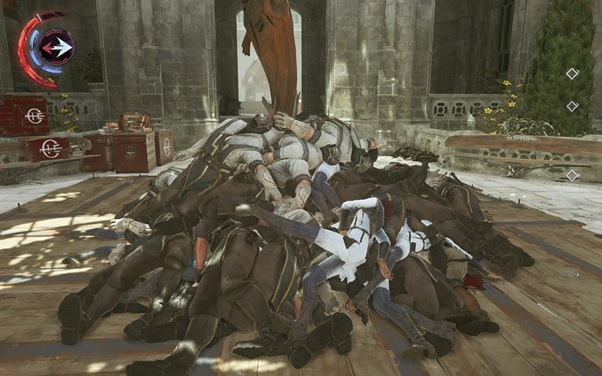
In the following interview, Kerich answers a series of questions on his project and speaks to the research that informs his practice as well as its broader relation to video game culture. Throughout his responses, Kerich gradually reveals his interest in exploring how violence and death are intensely abstracted through the visual and mechanical processes of video game systems, as well as how framing and intention play with the meaning of video gaming experience.
AB: Are there any specific visual or formal qualities you look for when selecting these games? Most of the pieces within your Piles series are recorded using relatively new games made with large budgets and varying degrees of realism. Does the fidelity of a game affect the way you conceptualize or read their representations of death or violence? Would this process work for you the same way in a game that was more abstract or stylized?
CK: I went into this project really wanting to focus on new, big budget (what are known as AAA) games since those are played by a wider audience. In terms of formal qualities, my strictest requirement was that I needed games where you can manipulate dead or unconscious bodies. There are many AAA games that involve killing or knocking people unconscious, but it’s only in the stealth-action and immersive-RPG subgenres do these elements reach a point where my project could be feasible. That’s how I ended up with these four core games: Dishonored: Death of the Outsider, Skyrim, Hitman, and Metal Gear Solid V. The visual qualities are a result of those constraints. Games where dead bodies can be moved at whim tend to value fidelity and “realism.” The games industry defines this realism within a specific set of conventions. Detailed character models, busy environment design, and even certain washed out color palettes are intended to communicate realism and fidelity visually, where the ability to move bodies around communicates it mechanically.
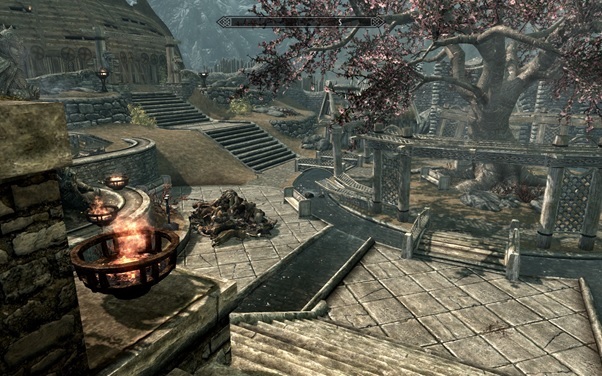
Because these games have an investment in realism, their violence has a certain charge that they wouldn’t have if they were more abstract. They represent our world, and so the ability to create a pile of bodies like the United States Army made in Abu Ghraib means something different when the people in the pile actually look like people. Obviously, none of the violence in video games is actual violence. Games represent death and violence. As such, the referents are critically important. Game violence is only identifiable as violence because of the behavior in the real world that it refers back to. In a more abstract game, the representation and referent are further apart, which might make the piece less powerful.
AB: That is interesting that you connect your project with the body pyramids of Abu Ghraib. In her 2010 essay “‘Cluster Fuck’: The Forcible Frame in Errol Morris’s Standard Operating Procedure,” Linda Williams examines this same topic through the lens of German media theorist Siegfried Kracauer and his concept of the mass ornament.i Here, Williams focuses on other historical examples where bodies have been clustered together into patterned formations for the purposes of spectacle or entertainment and asks readers how these ornamental masses are understood by both their participants and audiences. Are they read as inert and mute lumps? Or might they be animated and speak? The piles that you assemble here are not as geometric as the ones that Williams refers to, but how do your body piles function as performed demonstrations of order, rationalism, or control?
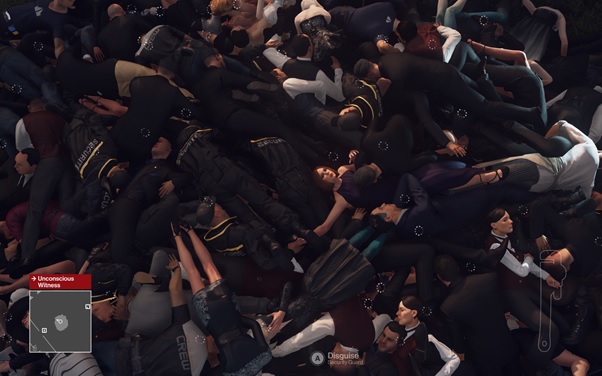
CK: Bodies in video games are deeply tied to the three things you mention: order, rationalism, and control. No matter how haphazard or natural they may appear in a game world, they still arise from the interaction of many different algorithms running on some kind of software and hardware. Computing itself is an assertion that information can be rationally ordered and controlled. Video games can try to dissemble that fact, and maybe try to push against it by striving for “realism” or to make characters “lifelike,” but all these systems and processes still leave their mark.
This project is about finding those marks of systems on bodies and trying to assess their impact. My performance of piling bodies is imposing one kind of order on bodies that are also being governed by algorithmic and hardware order. The way that imposing a body pile pulls on the order of hardware can show where values have been placed in not only creating the game but also the hardware it runs on. How these body masses are understood is tied to culture to be sure, but in the case of games, it is also inextricably linked to the technological infrastructure that facilitates it, which is itself a product of the culture that created it.
AB: How do you see yourself in relation to the large number of YouTube videos where players have performed similar body piling practices? Many of these kinds of videos seem to glorify or revel in the spectacle of killing and collecting non-player character (“NPC”) bodies—often in ways that are sexually or racially problematic. What specifically about your project allows for it to function as record or documentation of artistic processes? Why does it comment from a space of critical distance rather than participate within these trends?
CK: This has been a difficult question to navigate. Visually, it’s not very different than those videos—my project might show more of the process of creating the pile of bodies than is generally shown in similar videos on YouTube, but that is the extent of the difference. However, I certainly don’t see my work as being part of that practice. I think it comes down to the issue of context. If I released my work directly on YouTube with no accompanying materials, it could easily be taken as an uncritical reproduction of that phenomenon. It’s my goal, however, to not have it shown anywhere where there is not some contextualizing material to explain what’s going on and what my intentions are. That context can be added just from the choice of venue. Seeing the piece in a gallery is different than encountering it online, but context can be produced in other ways as well. The forthcoming web version of the project will be accompanied by critical writing that appears alongside the piece. Even if no one reads the writing, its existence at least signals “Oh, I am supposed to be thinking about this differently than as just a mere video game spectacle.”
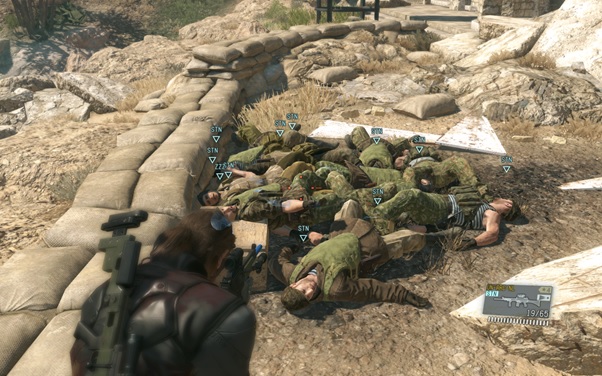
AB: You have cited Joseph DeLappe’s dead-in-iraq (2006-2011), and Anne-Marie Schleiner, Joan Leandre, and Brody Condon’s Velvet Strike (2002) as two canonical works of game art that heavily influenced your project. Although similar in their approaches to the meaning of violence and death within video games, both of these works differ from your Piles series in that they were conducted in live online multiplayer spaces around groups of other random players. Why did you specifically choose to set your performances within single player spaces using computer rather than player-controlled avatars?
CK: There are a few reasons. The first—and the least compelling—is that gaming culture is scary. Unlike those other pieces, I didn’t feel brave enough to try to perform this kind of work in a “gaming” space. The two pieces you mentioned are very courageous and bold. I still worry about potential backlash from toxic parts of these communities—and I say that as a straight white man! As an aside, I don’t think that the kind of violence and ideas that I’m pointing to in Piles make the kinds of straight, white, male toxic gamers particularly callous or desensitized. What it does do is create spaces that allow and reflect cultural entitlement to control and power over other bodies. If that sense of entitlement is threatened, it has historically resulted in a backlash. The second, more technical reason is that there are very few multiplayer games that allow for the piling of bodies in the way that I needed for this project. Physics synchronization across multiple online players is pretty computationally taxing and many online games don’t bother to do this. Further, many multiplayer online games aren’t of the genre that values fine control over bodies in the first place. I’m not saying that there isn’t a multiplayer game out there that would fit this project, but none jumped out to me as an immediate good fit. The third reason is that this piece is about how games, through their representations and technological infrastructures, speak to players at the moment of play. In order to be a proper reflection, it’s helpful to remove extraneous noise in order to facilitate the feeling of being isolated within the game. Adding the chaotic element of online players would be too hard to control. I feel it would make the piece too much about gaming culture’s reaction to piles of bodies instead of how the piles and bodies function in the games themselves. Both dead-in-iraq and Velvet Strike are about making actual interventions into the gaming community My project is more invested in making an intervention into perceptions of the artifacts themselves.
AB: Video games have a long history of being pointed to as a cause or contributing factor towards gun violence among young people. The obvious example of this would be the Columbine shooting and the resulting moral panic during the late 1990s, but similar conversations have arisen more recently. One notable example of this was earlier this year when the White House published a hastily assembled highlight reel of video game violence to deflect inquires around gun control following the school shooting in Parkland, FL. Obviously violence is an extremely prominent dynamic within game design, but how do you think that the general consumer reflects on this as they play a typical video game such as the ones you are displaying within your video series? Additionally what are some of your opinions on how the debate around violence and video games has shifted over the last couple of decades?
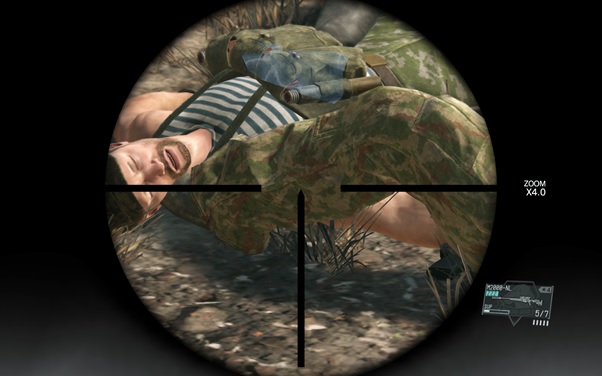
CK: First off, I believe the discussion about gun violence in games should primarily take place in the realms of gun control policy and toxic masculinity and not explicitly on violence in games. The recent shooting at an eSports tournament in Jacksonville, FL has recently brought the discussion back to games, and it has occasioned some very thoughtful writing from people working in the space of masculinity and eSports. Dr. Nick Taylor gave a very solid interview to Slate recently on this very issue.ii There have also been some powerful game art pieces that take games as a starting point and look outwards, Joseph DeLappe’s Elegy GTA(2018) being just one example that uses Grand Theft Auto V as a visual device for the number of shooting deaths in America.
The video put out by the White House and the panic around game violence in the 90s is all based on the facile idea that the general consumer does not do any reflection of the media they consume, what Stuart Hall would call “decoding.”iii The idea is that presenting violence in a game means that the people playing it will commit violence, or think violence is ok, or whatever. While it’s true that people do not always deeply commit time and energy into examining the media they consume, this attitude sidesteps the fact that it is the real world where young people are actually embedded that actually matters. It’s the toxic masculinity that makes young men feel entitled, aggressive, desiring of power and control, and their access to guns that enables gun violence. This sickness in our culture merely lies on the surface of our video games. Cultural critics, especially right wing ones, who point to video game violence first want the problem to be outside their lives and remain unwilling to change all the mundane ways that their lives already facilitate white patriarchal violence.
It’s not that I don’t think it’s worthwhile to look at games and how they approach violence. I want to make clear that Piles is not about showing how horrible video game violence is. In a world with a healthier culture, I think that these very same games could exist without issue. Instead, I think about the fact that someone coming from our culture, who desires absolute power and control over others and feels entitled to it, has the opportunity and space to uncritically enact that fantasy in many contemporary games. There’s a world in which games could try to deprogram those very same toxic masculine impulses. While a few games do attempt this, most, including the ones I use, don’t. I don’t think Piles is going to make anyone stop playing games. If it can modify how they understand what is happening in the moments they engage with games—in that critical moment of “decoding”—it could make a difference.
AB: Do you consider yourself to be subverting, disrupting, intervening, or working against these games? Or more so working within their ingrained systems for the purposes of exploration, research, and creation? Some of your previous work involves more direct alterations or modifications to your selected games’ codes. With this in mind, why did you choose to operate strictly within the bounds that these game developers originally defined?
CK: What we’re talking about here is actually two different things, the game as an artifact and the game as a design. The former is the actual artifact in front of me, the thing that is digitally instantiated, i.e. the game as played. I give it the inputs and make decisions in response to what it shows me. There’s a feedback loop, which is a simplistic kind of collaboration, but I think it still counts. I do a lot of anticipating and structuring so that the game will perform as I intend, so it can be kind of one sided. The game, in real time, is not adjusting for me in the same way. It’s a dialogue but a particular style of dialogue.
The other thing is a design that the game is infused with, that governs much of how it is built, and that defines, however loosely, what “intended play” looks like. That is what I’m working against. By design, games generally don’t want bodies to be piled on top of each other—at least not to the extent that I do it—for the sake of reducing physics computations and maintaining the tone that the games are trying to set. There are all sorts of obstacles in moment-to-moment play that I have to contend with that stem from these design decisions. In Metal Gear Solid V, dead bodies de-spawn and unconscious guards wake back up, so I need to maintain my pile by knocking out all of the guards in it. In Skyrim, bodies are very heavy and slow to move around. The list goes on. In the grand scheme of things, it’s a small subversion, but I still consider it one.

As for why I operate in the bounds of original intent in this project: it’s because I want the project to speak to the games themselves. It’s why I leave the UI in and record the whole process of creating the pile in these videos. I want a potential viewer to really understand that nothing is being added. When things are added, it can dilute the focus. This isn’t about how great a piece of video art I can make using a game, it’s about the game as an artifact—what it looks and feels like to play. If someone were to go and buy one of the games in the project and play it—i.e. an unmodded version—the game they’re playing is the same one that I use. That grounds the piece in real experience.
AB: How do you see what you are doing within Piles in relation to what Greig de Peuter and Nick Dyer-Witheford define as “counter-play”? Do you see yourself subversively “playing against a game’s systems for political or artistic goals” as they explain within their book Games of Empire?iv
CK: Counter-play is such an interesting concept for me to think about in relation to game art and my own artistic practice. I don’t think my piece fits the original definition from Games of Empire. They’re talking more about playing games, individually, in a way that resists empire—like playing a strict vegetarian socialist species in Stellaris or creating queer relationships in the Sims or something. What I’m doing in my piece, piling up all the bodies in a level, is the opposite. It’s extremely reinforcing of Empire--of a kind of colonial violence, of executive imperial power over life and death. It’s reproduced to be critical in my piece, and I think it shows some of the limitations of the original definition of counter-play. It was a little too straightforward. On the other hand, the term has evolved to the point of near meaninglessness and simply means “play against designer intention” broadly. I do think the piece does fit into that framework, but so do a lot of other things that aren’t particularly critical or resistant like speedrunning or white supremacist Skyrim mods. There’s a push in game studies to forsake political investments for mechanical or formal ones, and I think the bite that counter-play once had has been a casualty of that.
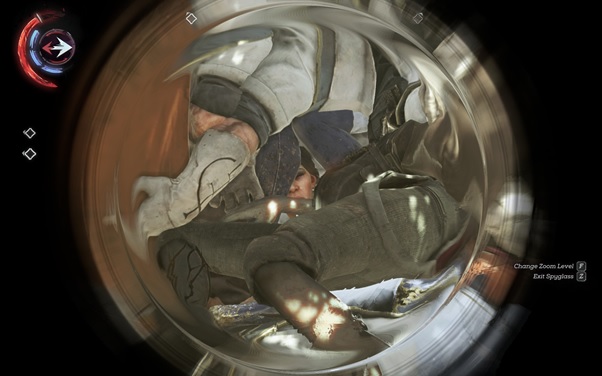
AB: How do you conceptualize your performance in relation to how Peuter and Dyer-Witheford examine playing video games as a contemporary form of labor? They qualify this by connecting gameplay to elements of immaterial labor such as “scientific know-how, hi-tech proficiency, cultural creativity, human sociability, and cooperative interactivity” as well as “the blurring of work and non-work time.”v Does the extreme length of time required to fully stack all of the bodies in each of your selected game levels resonate with you in this way? Are there any non-artistic examples of counter-play that you looked to when conceiving of this project such as Twitch streaming, “Let’s Play” videos, or any other examples?
CK: My piece was fairly labor-intensive. One of the videos is sixteen hours long, and it was important for me to show that work in the piece itself. You’re right in saying that games are a contemporary form of labor. By extension, that means that the violence in video games is also labor. The intense repetition of the same violent act over and over in the project reinforces this. It’s one way that the violence in games is dramatically set apart from violence in other forms of media. Violence in films is often shocking, spectacular, poignant, surprising, or in some other way generally marked. Game violence becomes abstracted from its referent because it’s a repetitive, laborious action. This can be hard to see with the distractions of story or other game objectives. Because I am solely focused on piling up bodies and doing nothing else, this labor becomes impossible to ignore.
I hadn’t thought about this until reading your question, but I realized my videos are oddly styled after similarly laborious gaming practices like speedrunning, especially to the extent that videos are used as proof in that community. In the speedrunning community to show that you have beaten a game in a certain length of time, it’s usually required that a video showing that feat be uploaded. My project is different than speedrunning in many ways, but these videos are also proof. They’re proof of what the game is and how it operates, they show that I actually did what I claimed to have done. Both speedrunning and my own project’s need for proof may unconsciously stem from the capitalist imperative that work must have tangible results, but that’s just unfortunately what it is.
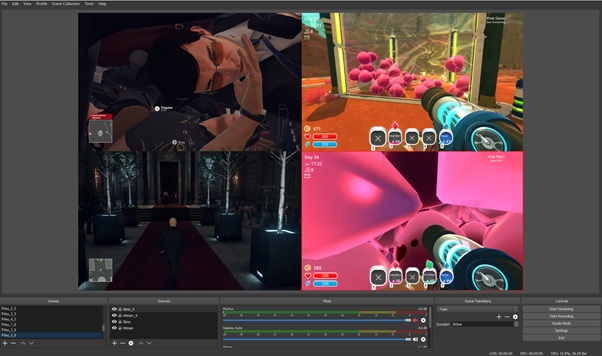
AB: Relating to the topic of “counter-play,” Gilles Deleuze defines the concept of “counter-actualization” in his book The Logic of Sense (2005) in an effort to explore the relationship between consistency and variation in a series of events.vi For him, repetition often comes with variables and unexpected occurrences that productively disrupt the overall series, but only if there is enough distance available to properly observe the disruption in relation to the whole. With repetition being both an integral action and theme within your work, how do you approach the concept of variation when performing each of these body piles? Additionally, in what ways do you use repetition and variation to communicate to your audience?
CK: Internally within each of the videos, I don’t think there’s too much visible variation. They tend to fall into a pattern of “approach guard, knock out/kill them, drag them to the pile.” It happens in different locations and to different NPCs, but at the end of the day, it looks pretty similar. To get the distance needed to make the variation visible in the final version of the project, I juxtapose videos of creating piles of bodies in different games next to one another. Variation between games becomes much more apparent that way, and things normally taken for granted can be seen to be specific choices. Once you have a construction where games are collections of specific aesthetic, mechanical choices that come with a myriad of political implications, critique can begin.
As I mentioned before, the repetition in each video also communicates the labor of repetitive violence in each game. More than that, it strains the illusion of a coherent game world itself. When actions in a game become decontextualized by repetition, you can start to appreciate how they are supposed to be contextualized, and evaluate them critically as political design decisions. I don’t just want to show these games to my audience, but I want to invite them into thinking about them critically. I’m setting the groundwork that will facilitate that critique.
AB: Lastly, how do you see yourself continuing with or moving on from this project? Are there any other iterations of the Piles series you would like to see in terms of games you have yet to work with or methods of display you have not tried? After you’re finished with Piles, do you think durational performance within game space is a method you might continue to use?
CK: I’m very excited about the upcoming web-streamed version, which will allow me to remix the different videos from Piles live in addition to releasing the accompanying written work. Previously, all of the different videos have lived separately in isolation, juxtaposed only when someone takes the time to open them up individually. Having two videos playing simultaneously side by side will be a big improvement. I’ve also toyed with live performance, which I might pursue because it allows me to be present as I perform the work. That dynamic will let me respond to questions and elaborate on my work. Additionally, it allows me to provide the necessary context for the piece in a more intimate setting. I find that very appealing.
In addition to those central four games, I’m planning on adding more remote points of reflection and comparison for Piles—specifically, other kinds of games that touch on similar themes but aren’t in the AAA space. For example, Viscera Cleanup Detail is a satirical game about being a science fiction janitor and cleaning up dead bodies after the protagonist of a different video game has gone through and made a mess. It has a similar but very different relationship to violence and gore. It’s much messier than AAA games dare to be, so it’d be very interesting to compare them. Similarly, there’s another indie game called Slime Rancher, where you collect and raise slimes. The slimes interact in a way modeled by a physics system that is very similar to the one that governs dead bodies in other games. Having a gameplay system that is often used for death be retrofitted to be about care and attention is a fascinating comparison point. I hope to record videos of them and add them to the rotation.
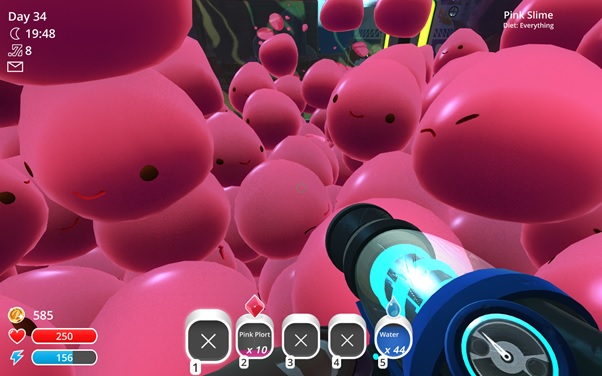
As far as durational performance goes, I don’t know. On one hand, it can be very grueling. On the other, it seems like I am built well for it. I like to test my limits and do repetitive things over and over again. What a waste of my talents if I didn’t keep doing it! It really comes down to a strong concept, one that’s worthy of the time and stress and mental energy. If I think of something that seems worthwhile as a durational performance, I’ll do it. Just playing contemporary video games is often a durational performance in and of itself, so it’s a particularly good way of reflecting what the medium is like and how it functions.
About the Author
Andrew Bailey is a scholar, artist, and curator who lives and works in Toronto, Ontario. Andrew holds an MA in Art History & Curatorial Studies from York University and a BFA in Printmaking from OCAD University. Currently, he is completing a PhD in Art History & Visual Culture at York University with research centered around how the field of game studies has chronicled and conceptualized contemporary video game art.
Chris Kerich is an artist, programmer, and human being with a B.S. in Mathematics with a minor in Computer Science from Carnegie Mellon and an M.S. in Comparative Media Studies from MIT. He has spent most of his life interested in rules and systems in different configurations. He has gradually widened his scope from just the technological rules themselves to their human impact and implications. Some of his latest academic work has been centered around a concept called "critical breaking," which involves an interrogation of digital systems using the idea of “breaking” the systems as an analytical lens. His artistic practice involves using breakdown alongside other methods to modify digital systems and explore their unseen facets and traits.
References:
- Linda Williams, “‘Cluster Fuck’: The Forcible Frame in Errol Morris’s Standard Operating Procedure,” Jump Cut, no. 52 (2010).
- Aaron Mak, “eSports Is Making Progress in Changing Its Culture. Don’t Let the Jacksonville Shooting Overshadow It,” Slate, August 29, 2018. Accessed September 2, 2018, https://slate.com/technology/2018/08/esports-is-making-progress-in-changing-its-culture-the-jacksonville-shooting-shouldnt-overshadow-it.html
- Stuart Hall, “Encoding/decoding,” in Culture, Media, Language: Working Papers in Cultural Studies, ed. Stuart Hall, Dorothy Hobson, and Andrew Lowe (London: Hutchinson, 1980).
- Nick Dyer-Witheford, and Greig De Peuter, Games of Empire: Global Capitalism and Video Games. (Minneapolis: University of Minnesota Press, 2009).
- Nick Dyer-Witheford, and Greig De Peuter, “A Playful Multitude? Mobilising and Counter-Mobilising Immaterial Game Labour” Fibre Culture Journal, no 5 (2005).
- Gilles Deleuze, The Logic of Sense, trans. Mark Lester and Charles Stivale (New York: Columbia University Press, 1990).

Body Clusters, Counter-Play, and Game Art within Chris Kerich’s Piles by Andrew Bailey and Chris Kerich is licensed under a Creative Commons Attribution-NonCommercial 4.0 International License
